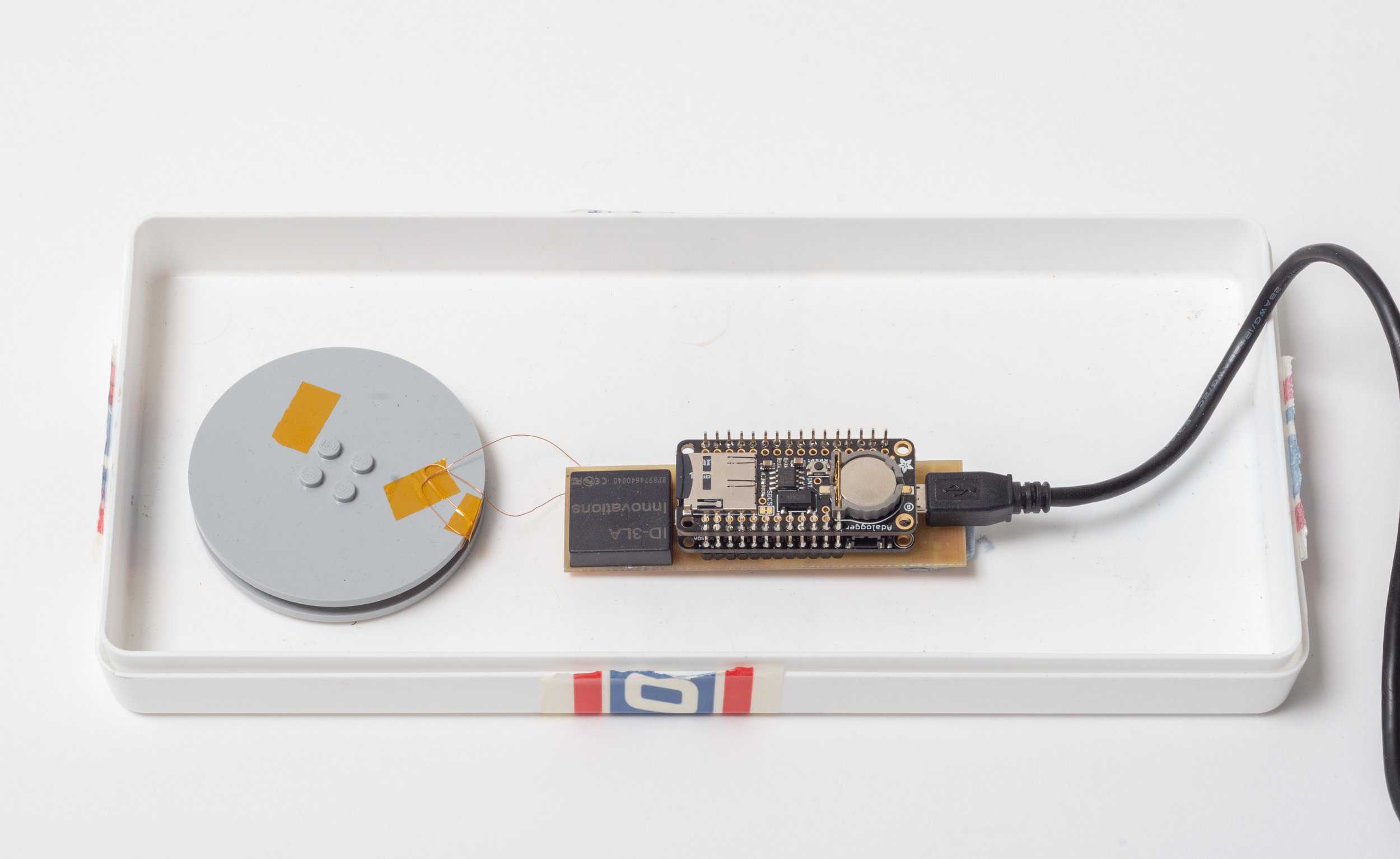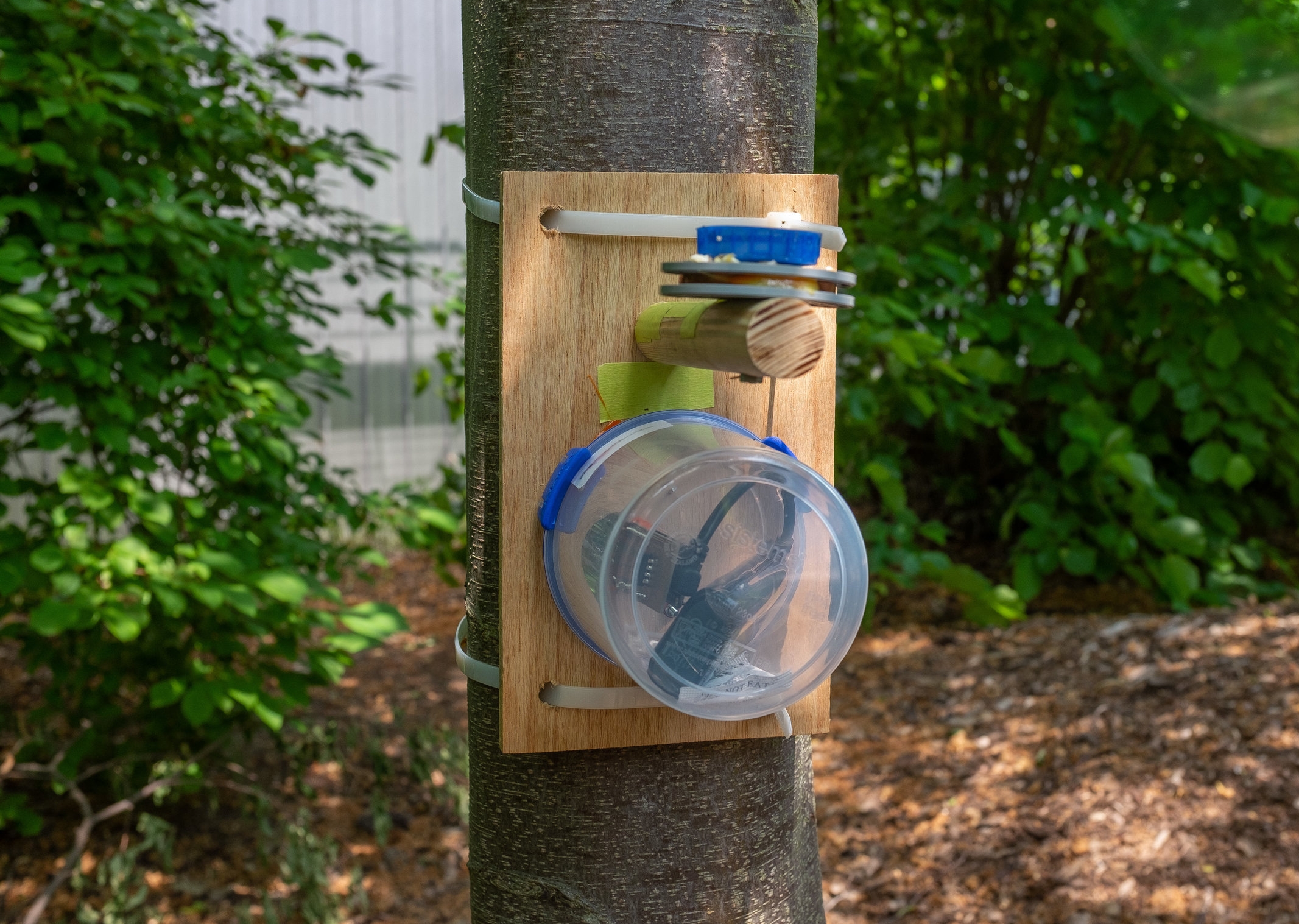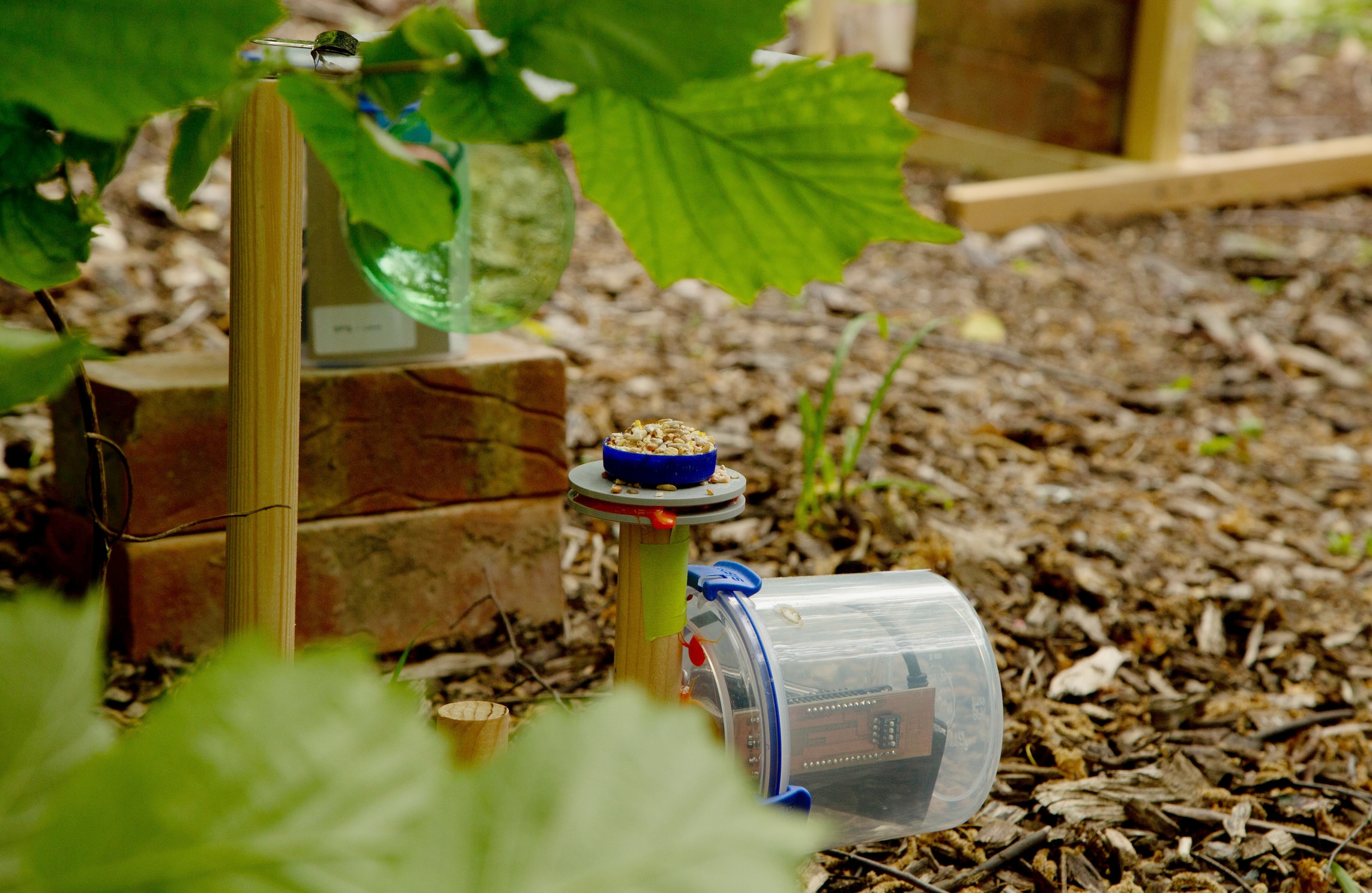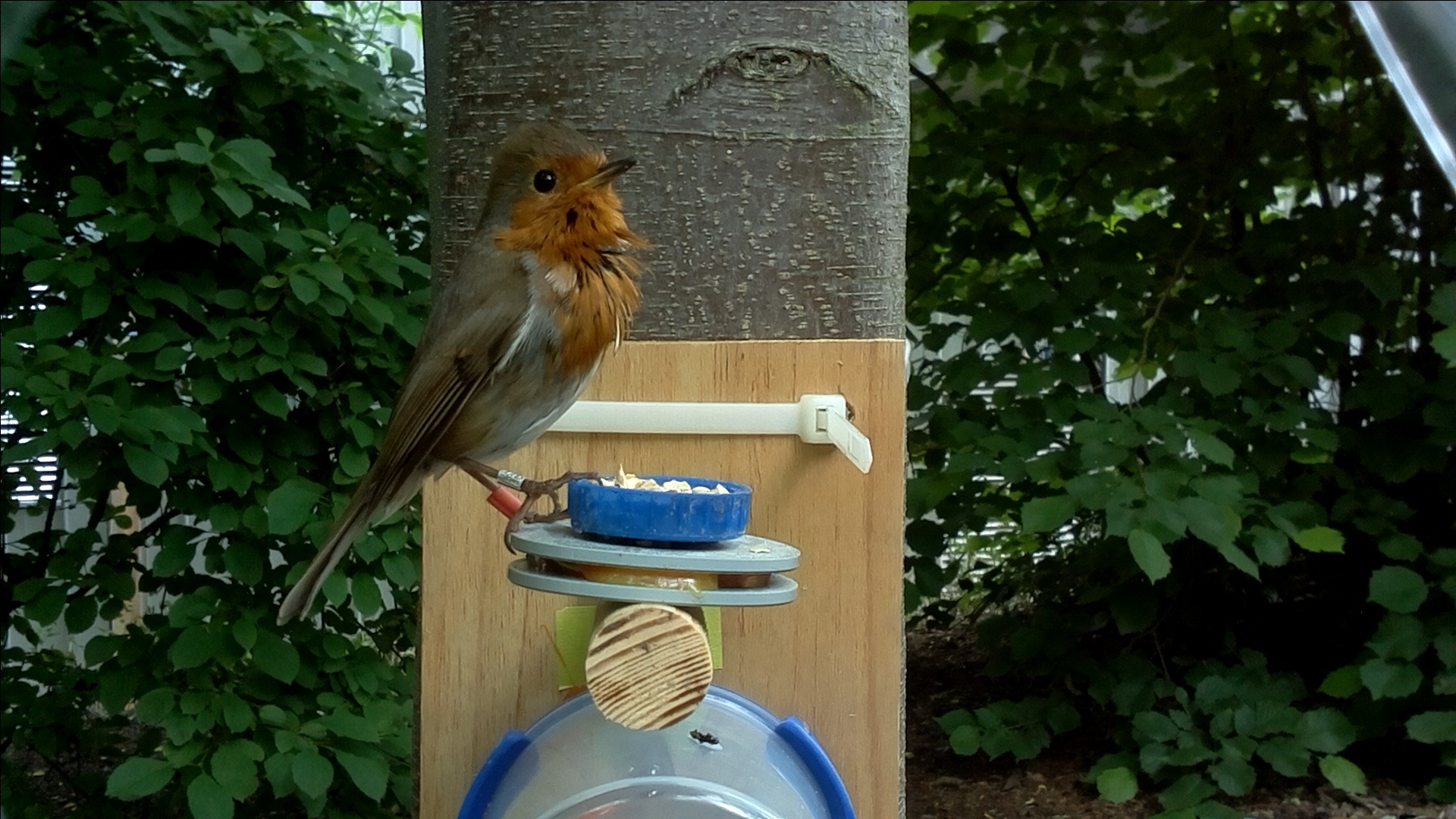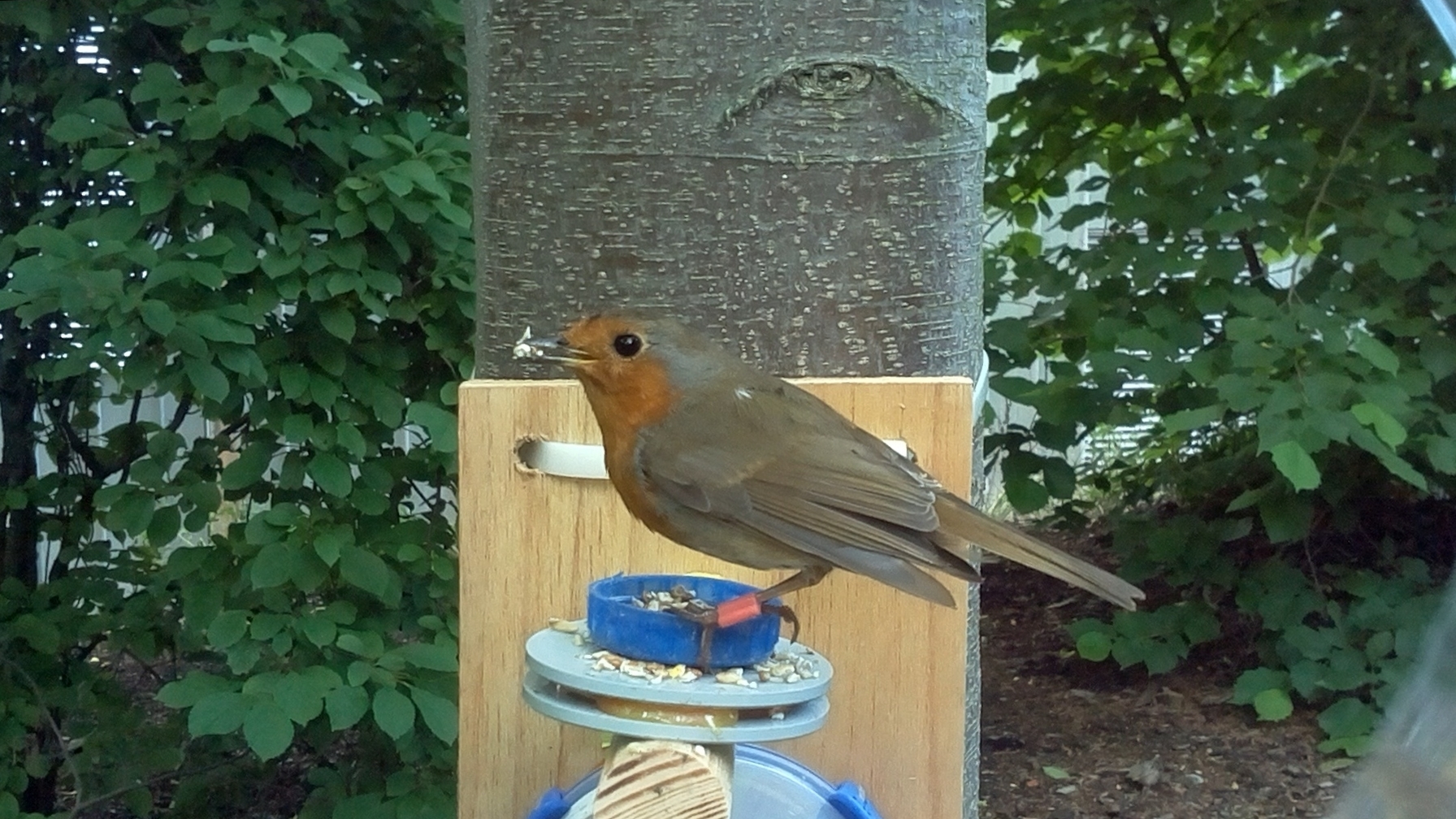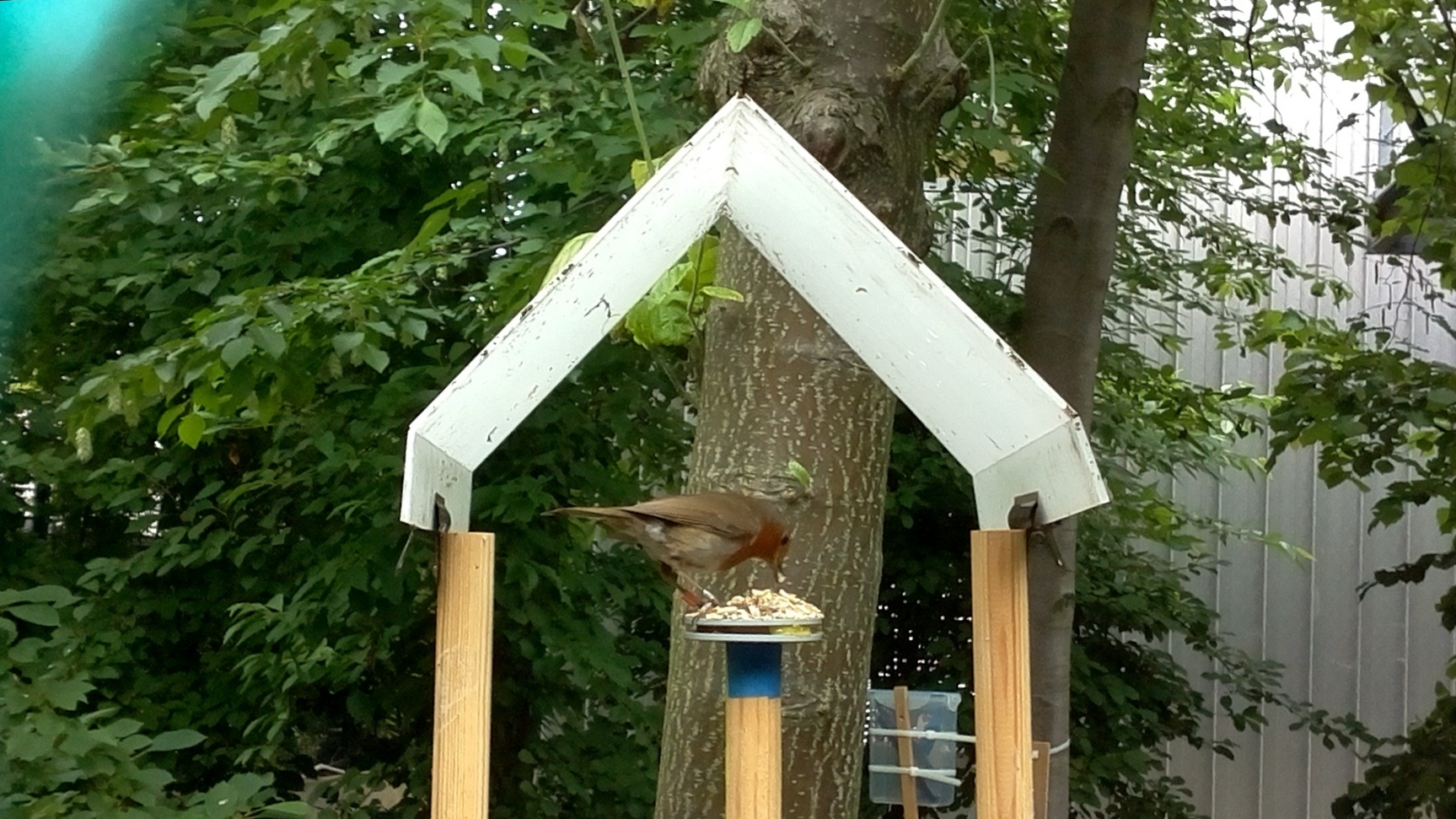What is a “Freader”?
Knowing where birds go is a tricky business. You can watch for birds of different species, but recognising individuals is another matter. Ringing birds with individual IDs has provided ornithologists with lots of information, but even so, most ringed birds are only recaptured very rarely. Radio trackers also work, but they have to be used with great care, and are expensive and eventually run out of power.
Enter RFID bird rings (also known as PIT tags). These contain tiny chips that transmit their unique ID when powered by an external antennae — just like the larger ones used by contactless travel cards. They are simple enough that any bird ringer can learn to use them, and they never run out of power. There’s no reason that all bird rings couldn’t be RFID rings.
Except… RFID rings have to be very close to a special antenna to be read. Very close — within about 5 cm. How can you get them to come that close? By offering something in return, of course: food! So for tracking birds, RFID readers are built into feeders to produce… freaders.
The problem is, most freaders are very expensive. That means not many scientists can afford to put out enough of them to get a detailed picture of where birds go.
Together, we can change that. We’ve been designing a DIY freader that anybody can make at home. We’ve already tested it with robins near our studio. Next, we plan to work with ornithologists to conduct studies in a single location like a village or wildlife reserve. Then, if that works, we’ll be publishing a recipe here so everybody can make their own freaders…
If enough people make the DIY freaders, we could build an infrastructure across the UK. Imagine being able to see where the birds in your garden have come to and are going… Imagine what a wealth of scientific data that would give to scientists… The possibilities are endless.
So check back to see how we’re doing!

